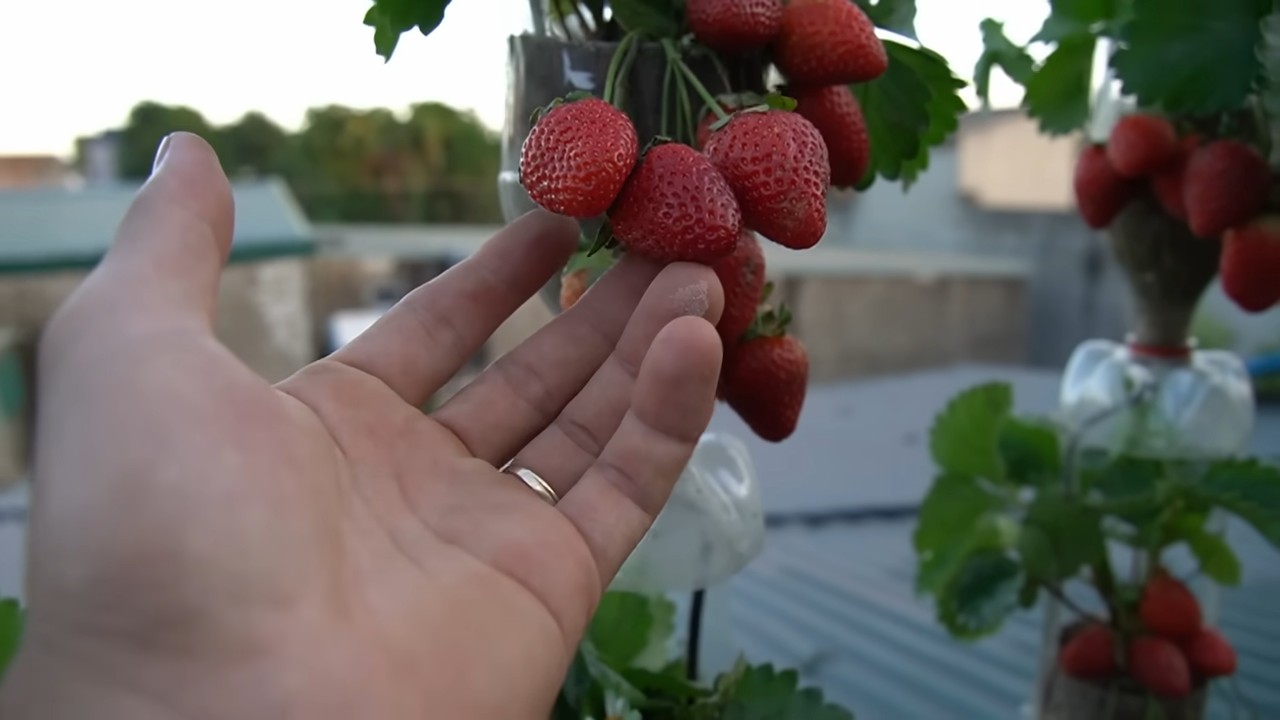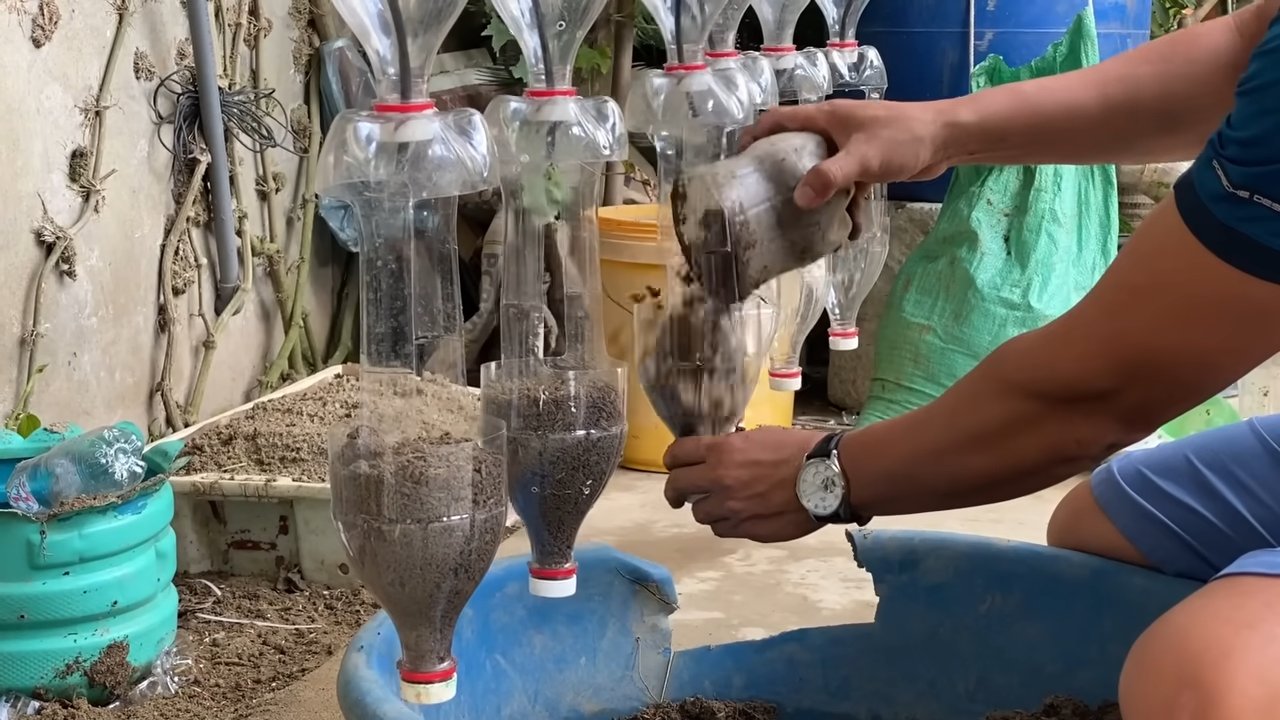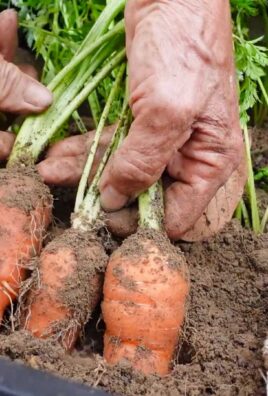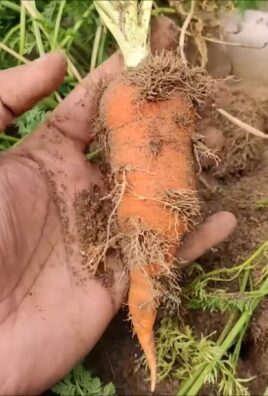DIY Strawberry Hanging Garden: Imagine plucking juicy, sun-ripened strawberries right from your own backyard, or even your balcony! Forget those expensive grocery store berries that lack flavor. I’m going to show you how to create a stunning and productive DIY strawberry hanging garden that will be the envy of all your neighbors.
Hanging gardens, while not always specifically for strawberries, have a rich history. Think of the legendary Hanging Gardens of Babylon, a testament to human ingenuity and a desire to bring nature closer. While we might not be building a wonder of the ancient world, we are tapping into that same spirit of creativity and connection with the earth. For centuries, people have sought innovative ways to cultivate plants in limited spaces, and hanging gardens are a beautiful and practical solution.
Why do you need this DIY trick? Well, besides the obvious benefit of fresh, delicious strawberries, a DIY Strawberry Hanging Garden is perfect for anyone with limited garden space. Whether you live in an apartment, have a small patio, or simply want to add a unique touch to your existing garden, this project is for you. Plus, hanging your strawberries keeps them away from pesky slugs and other ground-dwelling critters, ensuring a bountiful harvest. I’ll guide you through each step, making it easy and fun to create your own little strawberry paradise!

DIY Strawberry Hanging Garden: A Sweet Project!
Hey there, fellow garden enthusiasts! I’m so excited to share this project with you – a DIY strawberry hanging garden! Not only is it a fantastic way to grow delicious strawberries in a small space, but it also adds a touch of charm to any balcony, patio, or even a sunny indoor spot. Get ready to enjoy fresh, homegrown strawberries right at your fingertips!
What You’ll Need:
Before we dive in, let’s gather our supplies. Here’s a list of everything you’ll need to create your own strawberry hanging garden:
* A Hanging Basket: Choose a sturdy hanging basket. I recommend one that’s at least 12 inches in diameter to give your strawberry plants enough room to grow. You can find these at most garden centers or even online.
* Coco Coir Liner: This will line the inside of your hanging basket and help retain moisture. You can also use burlap or even thick felt, but coco coir is my personal favorite.
* Potting Soil: Use a high-quality potting mix that’s well-draining. Avoid using garden soil, as it can become compacted in a container. I like to use a mix specifically formulated for containers.
* Strawberry Plants: Of course! Choose everbearing varieties for a continuous harvest throughout the growing season. I usually go for around 5-7 plants for a 12-inch basket.
* Landscape Fabric: This will help prevent soil from spilling out of the holes we’ll be making.
* Scissors or a Utility Knife: For cutting the landscape fabric and making holes in the liner.
* Watering Can: Essential for keeping your strawberry plants hydrated.
* Slow-Release Fertilizer: This will provide your plants with a steady supply of nutrients.
* Gloves: To keep your hands clean!
Step-by-Step Instructions: Building Your Hanging Strawberry Paradise
Alright, let’s get our hands dirty! Follow these steps to create your very own strawberry hanging garden:
1. Prepare the Hanging Basket:
* First, make sure your hanging basket is clean and in good condition.
* Place the coco coir liner inside the basket, ensuring it fits snugly. Trim any excess liner that hangs over the edge.
* Now, cut a circle of landscape fabric slightly larger than the bottom of the basket. Place it inside the liner, covering the bottom. This will help prevent soil from washing out.
2. Add the First Layer of Soil:
* Pour a layer of potting soil into the basket, filling it about one-third of the way up.
* Mix in some slow-release fertilizer according to the package instructions. This will give your strawberry plants a good start.
3. Create Planting Holes:
* This is where the fun begins! Using your scissors or utility knife, carefully cut small X-shaped slits in the sides of the coco coir liner, spacing them evenly around the basket. I usually aim for about 4-6 slits per side, depending on the size of the basket.
* Cut small squares of landscape fabric and tuck them behind each slit, creating a little pocket to hold the soil in place. This is crucial to prevent soil erosion.
4. Plant the Side Strawberries:
* Gently remove a strawberry plant from its container, being careful not to damage the roots.
* Carefully push the roots through one of the slits from the inside of the basket.
* Tuck the plant into the slit, making sure the crown (where the leaves emerge) is facing outwards.
* Repeat this process for all the slits around the basket, spacing the strawberry plants evenly.
5. Add More Soil and Plant the Top Strawberries:
* Add more potting soil to the basket, filling it almost to the top.
* Plant the remaining strawberry plants on top of the soil, spacing them evenly. I usually place one in the center and the others around it.
* Make sure the crowns of the plants are slightly above the soil level.
6. Water Thoroughly:
* Give your newly planted strawberry hanging garden a good watering. Water slowly and evenly until the water drains out of the bottom of the basket.
* This will help settle the soil and encourage the roots to establish.
7. Hang and Enjoy!
* Carefully hang your strawberry garden in a sunny location that receives at least 6-8 hours of sunlight per day.
* Make sure the hanging mechanism is strong enough to support the weight of the basket, soil, and plants.
Caring for Your Strawberry Hanging Garden: Tips and Tricks
Now that your strawberry hanging garden is complete, here are some tips to keep it thriving:
* Watering: Strawberry plants need consistent moisture, especially when they’re fruiting. Check the soil moisture daily and water when the top inch feels dry to the touch. Avoid overwatering, as this can lead to root rot. Hanging baskets tend to dry out quickly, so you might need to water them more frequently than plants in the ground.
* Fertilizing: Continue to fertilize your strawberry plants every 2-3 weeks with a balanced liquid fertilizer. Follow the package instructions carefully. You can also use a fertilizer specifically formulated for strawberries.
* Sunlight: Strawberries need plenty of sunlight to produce fruit. Make sure your hanging garden is in a location that receives at least 6-8 hours of direct sunlight per day.
* Pruning: Remove any dead or yellowing leaves regularly to keep your plants healthy and productive. You can also trim back any runners (long stems that grow out from the plant) to encourage more fruit production.
* Pest Control: Keep an eye out for common strawberry pests like aphids, slugs, and snails. You can use organic pest control methods like insecticidal soap or diatomaceous earth to control these pests.
* Harvesting: Harvest your strawberries when they are fully red and ripe. Gently twist the berry off the stem. The more you harvest, the more your plants will produce!
* Overwintering: In colder climates, you’ll need to protect your strawberry plants during the winter. You can bring the hanging basket indoors to a cool, bright location, or you can wrap it in burlap or bubble wrap to insulate it from the cold.
Troubleshooting: Common Issues and Solutions
Even with the best care, you might encounter some issues with your strawberry hanging garden. Here are some common problems and how to solve them:
* Yellowing Leaves: This could be a sign of overwatering, underwatering, or nutrient deficiency. Check the soil moisture and adjust your watering schedule accordingly. Fertilize your plants with a balanced fertilizer.
* Lack of Fruit: This could be due to insufficient sunlight, poor pollination, or nutrient deficiency. Make sure your plants are getting enough sunlight and fertilize them regularly. You can also hand-pollinate the flowers by gently brushing them with a small paintbrush.
* Pests: As mentioned earlier, keep an eye out for common strawberry pests and take action to control them.
* Root Rot: This is caused by overwatering and poor drainage. Make sure your potting mix is well-draining and avoid overwatering. If you suspect root rot, you can try repotting your plants in fresh soil.
Choosing the Right Strawberry Variety:
Selecting the right strawberry variety is crucial for a successful hanging garden. Here’s a breakdown of some popular choices:
* Everbearing Varieties: These are my go-to for hanging baskets. They produce fruit throughout the growing season, offering a continuous harvest. Some popular everbearing varieties include ‘Albion,’ ‘Seascape,’ and ‘Ozark Beauty.’
* Day-Neutral Varieties: Similar to everbearing, day-neutral varieties produce fruit regardless of the day length. ‘Tristar’ and ‘Tribute’ are excellent choices.
* June-Bearing Varieties: These varieties produce a large crop of strawberries in June. While they’re not ideal for continuous harvesting, they can still be grown in hanging baskets if you’re looking for a concentrated harvest. ‘Honeoye’ and ‘Earliglow’ are common June-bearing varieties.
Consider these factors when choosing your strawberry plants:
* Climate: Choose varieties that are well-suited to your local climate.
* Taste: Some varieties are sweeter than others. Consider your personal preferences.
* Disease Resistance: Look for varieties that are resistant to common strawberry diseases.
Creative Variations: Beyond the Basics
Want to add a personal touch to your strawberry hanging garden? Here are a few creative variations to inspire you:
* Mixed Planting: Combine strawberries with other herbs or flowers in your hanging basket. Basil, thyme, and marigolds are great companion plants for strawberries.
* Vertical Garden: Create a vertical strawberry garden by attaching multiple hanging baskets to a wall or fence.
* Tiered Planter: Use a tiered planter

Conclusion
So, there you have it! Creating your own DIY Strawberry Hanging Garden isn’t just a fun project; it’s a gateway to fresh, delicious strawberries right at your fingertips. Forget those bland, store-bought berries that lack the vibrant flavor of homegrown produce. This method offers a space-saving, aesthetically pleasing, and incredibly rewarding way to cultivate your own little strawberry patch, even if you only have a balcony or a small patio.
Why is this DIY trick a must-try? Because it’s more than just gardening; it’s about reclaiming control over your food source, connecting with nature, and adding a touch of beauty to your surroundings. Imagine stepping outside and plucking ripe, juicy strawberries straight from your hanging garden – the taste is simply unmatched. Plus, you’ll know exactly what went into growing them, avoiding harmful pesticides and ensuring the freshest possible flavor.
But the beauty of this project lies in its adaptability. Feel free to experiment with different container sizes and materials. Upcycle old buckets, repurpose plastic bottles, or even get creative with woven baskets. The possibilities are endless! For a truly unique touch, consider adding companion plants like basil or marigolds to your hanging garden. These not only deter pests but also enhance the flavor of your strawberries. Another variation could involve using different types of strawberries. Everbearing varieties will provide a continuous harvest throughout the growing season, while June-bearing varieties offer a larger crop all at once. Think about what suits your needs and preferences best.
Don’t be intimidated if you’re a beginner gardener. This project is surprisingly simple and requires minimal effort. With a little bit of planning and some basic supplies, you can create a thriving strawberry haven in no time. The key is to provide your plants with plenty of sunlight, well-draining soil, and regular watering. And remember, patience is key! It takes time for strawberries to mature and produce fruit, but the wait is well worth it.
We wholeheartedly encourage you to give this DIY Strawberry Hanging Garden a try. It’s a fantastic way to enjoy fresh, homegrown strawberries, beautify your space, and connect with nature. And most importantly, we want to hear about your experience! Share your photos, tips, and challenges in the comments below. Let’s create a community of strawberry enthusiasts and inspire others to embark on this rewarding gardening journey. What are you waiting for? Get your hands dirty and start building your own hanging strawberry paradise today! This **DIY Strawberry Hanging Garden** is a project you won’t regret.
Frequently Asked Questions (FAQ)
What type of strawberries are best for a hanging garden?
The best type of strawberries for a hanging garden are generally everbearing or day-neutral varieties. Everbearing strawberries produce fruit throughout the growing season, offering a continuous harvest. Day-neutral varieties are less sensitive to day length and also produce fruit over an extended period. June-bearing strawberries, while producing a larger crop, do so only once a year, making them less ideal for a continuous harvest in a hanging garden. Some popular choices include:
* **Everbearing:** ‘Seascape’, ‘Albion’, ‘Ozark Beauty’
* **Day-Neutral:** ‘Tristar’, ‘Tribute’
Consider your local climate and growing conditions when selecting the best variety for your area. Local nurseries can provide valuable insights into which varieties thrive in your specific region.
What kind of soil should I use for my strawberry hanging garden?
Strawberries thrive in well-draining, slightly acidic soil. A good potting mix specifically formulated for containers is ideal. Avoid using garden soil, as it can become compacted in containers and hinder drainage. Look for a potting mix that contains ingredients like peat moss, perlite, and vermiculite to ensure proper aeration and drainage. You can also amend your potting mix with compost to provide additional nutrients. A pH level between 5.5 and 6.5 is optimal for strawberry growth. You can test the pH of your soil using a soil testing kit available at most garden centers.
How often should I water my strawberry hanging garden?
Watering frequency depends on several factors, including the weather, the type of container you’re using, and the size of your plants. Generally, you should water your strawberry hanging garden when the top inch of soil feels dry to the touch. During hot, dry weather, you may need to water daily, or even twice a day. Avoid overwatering, as this can lead to root rot. Ensure that your containers have adequate drainage holes to prevent water from accumulating at the bottom. A good rule of thumb is to water deeply until water drains out of the bottom of the container.
How much sunlight do strawberries need?
Strawberries need at least 6-8 hours of direct sunlight per day to produce abundant fruit. Choose a location for your hanging garden that receives plenty of sunlight throughout the day. If you live in a particularly hot climate, some afternoon shade may be beneficial to prevent the plants from overheating. Insufficient sunlight can result in reduced fruit production and smaller, less flavorful berries. Observe the sunlight patterns in your yard or balcony to determine the best location for your strawberry hanging garden.
How do I fertilize my strawberry plants?
Strawberries are heavy feeders and benefit from regular fertilization. Use a balanced fertilizer specifically formulated for strawberries or fruits and vegetables. Follow the instructions on the fertilizer package for application rates and frequency. You can also use organic fertilizers like compost tea or fish emulsion. Fertilize your plants every 2-4 weeks during the growing season. Avoid over-fertilizing, as this can lead to excessive foliage growth at the expense of fruit production.
How do I protect my strawberries from pests and diseases?
Several pests and diseases can affect strawberry plants. Common pests include aphids, spider mites, and slugs. Diseases include powdery mildew and gray mold. To prevent pest and disease problems, choose disease-resistant varieties, provide good air circulation, and avoid overwatering. Inspect your plants regularly for signs of pests or diseases. If you detect any problems, take action promptly. You can use organic pest control methods like insecticidal soap or neem oil to control pests. For diseases, remove infected leaves and apply a fungicide if necessary.
How do I overwinter my strawberry hanging garden?
In colder climates, you’ll need to protect your strawberry plants from freezing temperatures during the winter. One option is to bring your hanging garden indoors and place it in a sunny location. Another option is to insulate the containers by wrapping them in burlap or bubble wrap. You can also mulch around the base of the plants with straw or leaves to provide additional insulation. Water sparingly during the winter months, as the plants will be dormant. In milder climates, you may not need to take any special precautions.
Can I grow strawberries from seed in a hanging garden?
While it’s possible to grow strawberries from seed, it’s generally more challenging and time-consuming than starting with established plants. Strawberry seeds require a period of cold stratification to germinate properly. It can also take several months for seedlings to mature and produce fruit. For beginners, it’s recommended to start with bare-root strawberry plants or strawberry runners, which are readily available at most garden centers.
How long does it take for strawberries to produce fruit in a hanging garden?
The time it takes for strawberries to produce fruit depends on the variety and the growing conditions. Generally, you can expect to harvest your first strawberries within a few months of planting. Everbearing and day-neutral varieties will typically produce fruit sooner than June-bearing varieties. Provide your plants with plenty of sunlight, water, and fertilizer to encourage fruit production. Be patient, and you’ll be rewarded with a bountiful harvest of delicious strawberries.




Leave a Comment